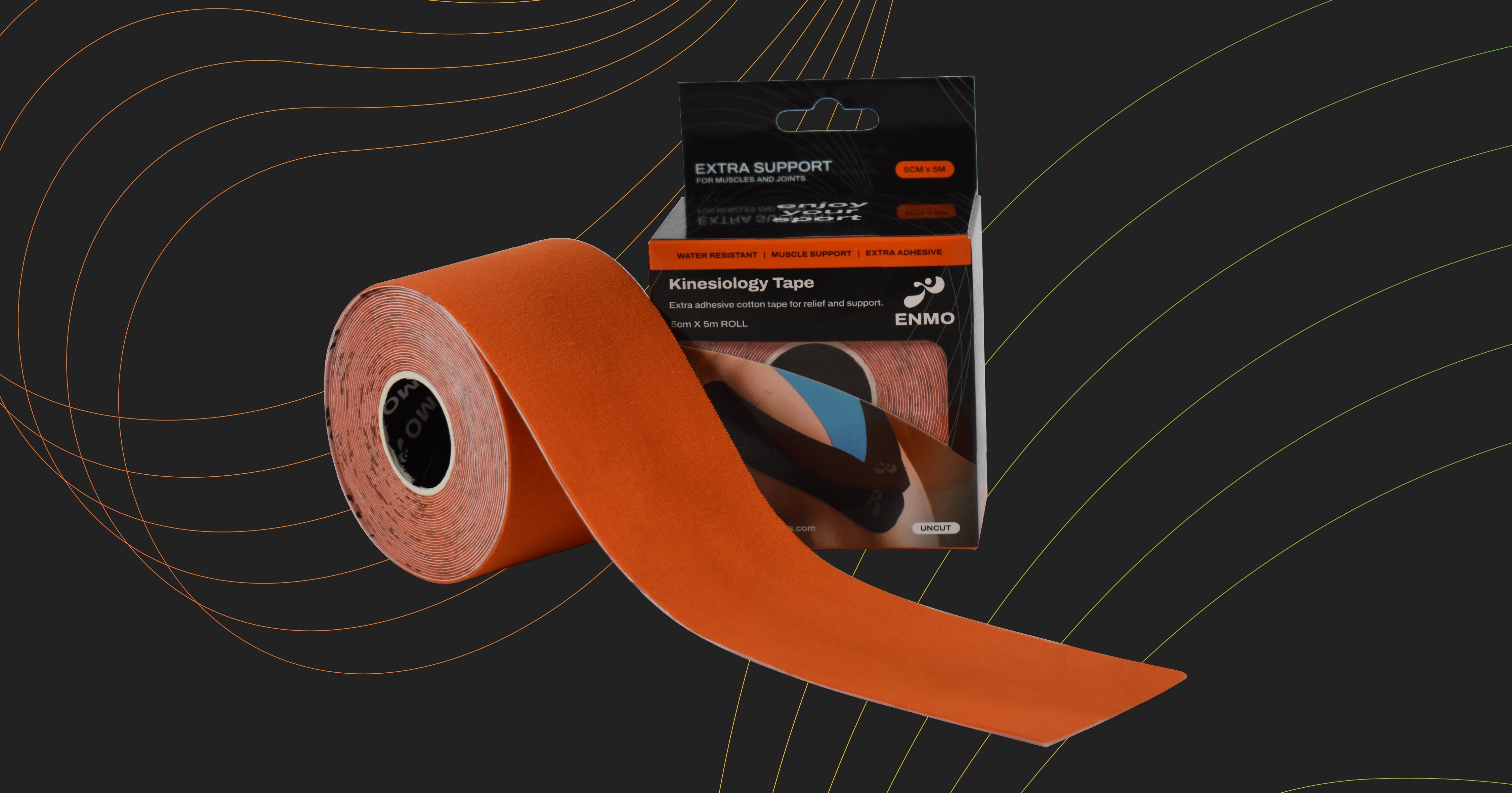
How to Apply Kinesiology Tape (and Which Type to Choose)
When used correctly, kinesiology tape can support movement, reduce discomfort and help athletes stay in the game. At ENMO Sports, we offer kinesiology tapes in both pre-cut strips and un-cut rolls, so you can choose the best option for your sport and taping style.
Shop our full range here: ENMO Kinesiology & Sports Tapes.
What You'll Learn in This Guide
- The difference between pre-cut and un-cut tape
- How to apply kinesiology tape correctly
- When to use each format
- Key safety reminders
Pre-Cut vs Un-Cut Tape — What's the Difference & When to Use Each
Un-Cut Roll
This is the traditional roll of tape that you cut yourself.
Pros: Fully customisable; ideal for large muscles or unique taping patterns.
Cons: Requires scissors and a bit more time to prepare.
Best for: Experienced users, or when taping large or irregular areas such as the back or thighs.
Pre-Cut Strips
These are pre-measured and ready to apply straight out of the box.
Pros: Fast, convenient, and consistent — no need to measure or cut.
Cons: Less flexibility in adjusting length or shape.
Best for: Quick, standard applications like knees, shoulders, or calves; great for beginners or pre-match use.
Quick Summary
- Choose un-cut tape for flexibility and customisation
- Choose pre-cut tape for speed and simplicity
Shop both options at ENMO Kinesiology & Sports Tapes.
Step-by-Step: How to Apply Kinesiology Tape
Here's a general guide for application (for sports and general use — not a substitute for professional physiotherapy advice).
1. Prepare the Skin
Make sure the area is clean, dry, and free of oils or lotions. Trim excess hair if needed to help adhesion.
2. Measure and Cut (If Using Un-Cut Tape)
Cut the desired length and round the corners of each strip to reduce peeling.
3. Anchor the Tape
Apply the first few centimetres ("anchor") with no stretch.
4. Apply with Tension
Stretch the muscle or joint slightly, then apply the middle portion of the tape with about 10–50% stretch, depending on the desired support. Avoid overstretching.
5. Finish with No Tension
The last section ("tail") should be applied without stretch. Rub the tape gently to activate the adhesive.
6. Test Movement
Move the joint gently to ensure comfort. The tape should feel supportive but not restrictive.
7. Wear Time
You can usually leave kinesiology tape on for 2–5 days. It's water-resistant and designed to stay in place through workouts and showers.
8. Remove Gently
Peel slowly in the direction of hair growth, supporting the skin as you go. Removing after a shower can make it easier.
When to Use Each Format
Use Kinesiology Tape When:
- You need extra support during training or competition
- You want to reduce muscle fatigue or enhance movement awareness
- You're recovering from a minor strain or overuse issue (with professional guidance)
Choose Un-Cut Rolls If:
- You're taping larger areas or need custom lengths
- You have some experience with taping and want flexibility
Choose Pre-Cut Strips If:
- You want a quick, ready-to-use option
- You're new to taping or applying it pre-match for common areas
Tips & Best Practices
- Test a small piece first if you have sensitive skin
- Avoid applying over broken or irritated skin
- Rub down the tape after applying to improve adhesion
- Keep your tape in a cool, dry place for best results
- Consult a physiotherapist or sports professional if you're unsure about technique
Final Thoughts
Kinesiology tape is a simple yet effective support tool for athletes of all levels. Whether you're training, competing, or recovering, it can help you move with confidence and stay active.
Explore our full range here: ENMO Kinesiology & Sports Tapes.